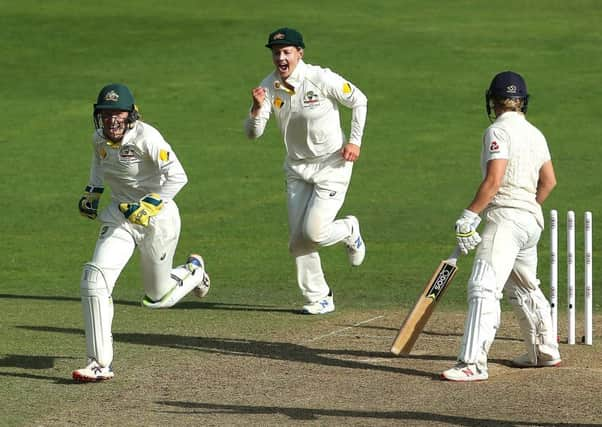Chris Waters – Why England women are left playing catch-up


If England are to taste Ashes glory this summer, then it is down to the men after their female counterparts lost to Australia.
Heather Knight’s team lost the Ashes at the earliest opportunity, having been beaten convincingly in the three one-day internationals before drawing the solitary Test match.
Advertisement
Hide AdAdvertisement
Hide AdThe ongoing three-match T20 series is neither here nor there; Australia are deserving winners of sport’s biggest prize.
If England’s men lost the Ashes at the earliest opportunity, something that has been known to happen from time to time, there would be hell on and more post mortems than the number performed on Silent Witness.
Reviews would be commissioned, headed-up by suited figures that doubtless no one has heard of, and strategies put in place to make sure that such calamity does not happen again.
As such, if the English women’s game is serious about moving forward, about being the best and toppling Australia, then it has to look inward and learn from these difficult experiences.
Advertisement
Hide AdAdvertisement
Hide AdFor, when it comes to the crucial infrastructure and funding of the game, England are lagging well behind their Australian rivals.
Take the number of professional cricketers in the respective countries. Whereas England have 20 centrally-contracted women’s players making a full-time living from the sport, more than 100 women in Australia are professional or semi-professional, creating competition for places and raising standards.
The Australian domestic system is much better; there are more funds for the players and more chances to play.
The England and Wales Cricket Board is not averse to the problem, and it is encouraging that there are plans to restructure the women’s game in this country.
Advertisement
Hide AdAdvertisement
Hide AdEight-to-10 regional elite teams are to be introduced, giving more players the chance to be professional or semi-professional.
Not for the first time, though, the ECB is playing catch-up, just as they have been in men’s franchise cricket since the birth of the Indian Premier League.
At present, the women’s T20 Kia Super League in England lasts for just one month and the players’ salaries are meagre.
It is imperative that our women have more opportunity to play with and against the top players and, crucially, the chance to earn a living from the sport.
Advertisement
Hide AdAdvertisement
Hide AdThe ongoing Ashes series has highlighted the gulf in class between the nations. Although England perhaps did not do themselves justice, no-one would deny that Australia have been far superior technically and mentally.
England’s batting, in particular, has been clinically exposed. Batting techniques have been found wanting – not least in the final ODI in Canterbury, where England lost by 194 runs after they were bowled out for 75 in reply to 269-7.
Many of England’s players have been great servants over the years, forming the bulk of the side that won the World Cup only two years ago. But the main core of players has changed very little, and not enough pressure is being applied on those players at domestic level; too much stability can lead to stagnation.
Coaches talk time and again about the importance of competition for places, and if you’ve got just 20 professional cricketers in the country, competition is always going to be at a premium.